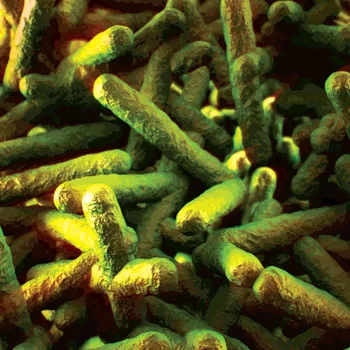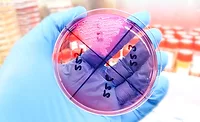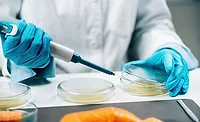Trends in Food Safety Testing

In our last Food Safety Insights, we discussed the major trends occurring in the food safety testing market, namely, the continued growth in sample volumes, a greater focus on environmental monitoring, how these changes are impacting the commercial lab business, and the impact of the use of whole-genome sequencing (WGS). In this article, we wanted to further explore this growth in testing, hear more about why processors are collecting more samples, the rate at which processors think their testing may continue to change in the near future, and where they are analyzing their samples. And since we will be talking about environmental monitoring, we included questions about Listeria.
Before we report what we found, I would like to add a comment about the collection of the data in this survey. This survey was collected during the second week of April 2020. This week, of course, was right in the middle of the COVID-19 pandemic and all the dramatic impacts it had and is having on food processing. In their responses, many processors commented that their overall business and production volume—and therefore, their sampling—was suddenly significantly up or down due to impacts from the pandemic mitigation. Some were working overtime, whereas others were shut down. But these companies also indicated to us the longer-term trends for their sampling programs that they expect to see when their business is again normalized. For the data we report in this article, we have made our best efforts to exclude any short-term impacts of the pandemic and to look only at the longer-term trends that we assume will resume once we are past this crisis. Should that turn out not to be the case, and there is indeed a significant and longer-lasting impact on testing for food safety as a result of the pandemic response, we will examine that impact in a future article.
In this survey, we received data and comments from more than 150 food processors, mostly in the U.S. and Canada but also from 21 other countries. The survey included responses from processors in every processing category.
Testing Forecast: Higher Volume, More Outsourcing
When we asked how their sample volumes will change in the next 12 months, roughly one-half of U.S. and Canadian processors indicated that their sample volumes will stay about the same (Figure 1), while roughly 25 to 31 percent (depending on sample type) reported that their samples volumes will increase more than 10 percent, with another roughly 10 percent saying they would be increasing their sample volumes by 5 percent or more. Consistent with our reporting that food safety sampling continues to grow, very few processors—fewer than 7 percent—said that their sample volumes would decrease, leaving no offsetting decreases for the large increases. For the international processors, the skew in the data was even more extreme, with more than 70 percent reporting expecting a sample volume increase of 10 percent or more.
When asked why they would be increasing their sample volumes, a majority of processors cited increases in production volume (Figure 2). Many commented that they were “adding lines,” “adding new products,” or simply “getting new customers.” Others cited increased demands for testing data—particularly for pathogen testing—that they are getting from customers and/or from their auditors. We also heard about more demand for data from regulatory agencies, to comply with specific regulations or import/export requirements as the companies pursue new markets. Some also mentioned internal demand, describing the need for additional validation studies or investigations.

One of the very few companies that reported an anticipated decrease in sample volume said, “Based on 4 years of data, we are reducing the frequency of the identified locations.” This sounds like a very good use of an evidence-based adjustment in a sampling program, but comments like this one, citing a sample-volume reduction for any reason, were the exception.
From what we also learned, it seems that much of this increasing volume of samples will find its way to commercial labs. On a sample-weighted basis, 70 percent of the pathogen samples reported will be sent to a commercial lab, with only 21 percent staying at a processor’s in-plant lab (Figure 3). For the less risky routine (indicator) samples, slightly more than one-half will be analyzed at an in-plant lab, with the remaining samples being sent out to either a commercial or central corporate lab.

In previous surveys, we have seen a larger percentage of nonpathogenic samples staying in the in-plant lab, but data from this sample may indicate that the drive to outsource pathogen samples may also be dragging more nonpathogen samples with them to the commercial lab. This would be a significant development for commercial labs and is a trend we will continue to watch.
Specifics of Listeria Testing
It is no secret that food processors are also putting more focus on the control of Listeria. In this survey, Listeria accounted for 47 percent of all samples collected, higher than the proportion of any other test target. When looking at the growth in sample volumes over the next 12 months, processors reported that their Listeria samples will grow by approximately 7 percent—faster than any other category—which also confirms our previous data showing Listeria as the fastest-growing category in pathogen tests. The focus of this demand for Listeria testing is environmental monitoring. In this survey, 66 percent of the Listeria samples collected were collected for environmental monitoring (and with 81 percent being analyzed for Listeria spp. rather than Listeria monocytogenes).
Processor Use of WGS Declines
An area that we have continued to track over the years is the use of WGS by processors. We have previously discussed many times the dramatic impact that the use of WGS by the U.S. Food and Drug Administration (FDA) and the U.S. Centers for Disease Control and Prevention (CDC) has had on the market and on food safety in general. Understanding that FDA will be using WGS to analyze samples that they collect during inspections, and that CDC is using WGS on patient samples and in their outbreak investigations, we wanted to keep a continuous eye on the potential growth of the use of WGS by processors. Will processors see the need to follow the lead of the regulatory agencies? Even as a defensive measure?
We have asked this question in our surveys at least once each year since 2017. In each of the three previous surveys, no more than 10 percent of respondents reported using WGS for at least some of their samples. In this survey, only 5 percent reported that they are using WGS in any capacity. Interestingly, in this survey, we also asked those who reported that they have used WGS how many samples per year they have submitted for sequencing, and only a few reported that they have sent out as many as 10 samples in the past year, with most reporting a far smaller number. This confirms our previous reporting that processors are still generally not using WGS, but even those few that are submitting samples for WGS are using the technology very sparingly. Utilization of WGS by processors remains at an extremely low level.
At the time of the writing of this column in late April 2020, we are still very much in the middle of the major market and supply chain dislocations caused by the coronavirus pandemic. Not knowing when the pandemic will end (but knowing that it will end) and also not knowing what the full impact of the disruption will be or how long it will take for us to see a full recovery, it does seem that once we do get to that full recovery, testing in food safety will continue to grow. When that happens, we will see new opportunities and developments as processors maintain their drive for continuous improvement in environmental monitoring and other aspects of microbiological testing.
Bob Ferguson is president of Strategic Consulting Inc. and can be reached at foodsafetyinsights@gmail.com or on Twitter at @SCI_Ferguson.
Looking for quick answers on food safety topics?
Try Ask FSM, our new smart AI search tool.
Ask FSM →









